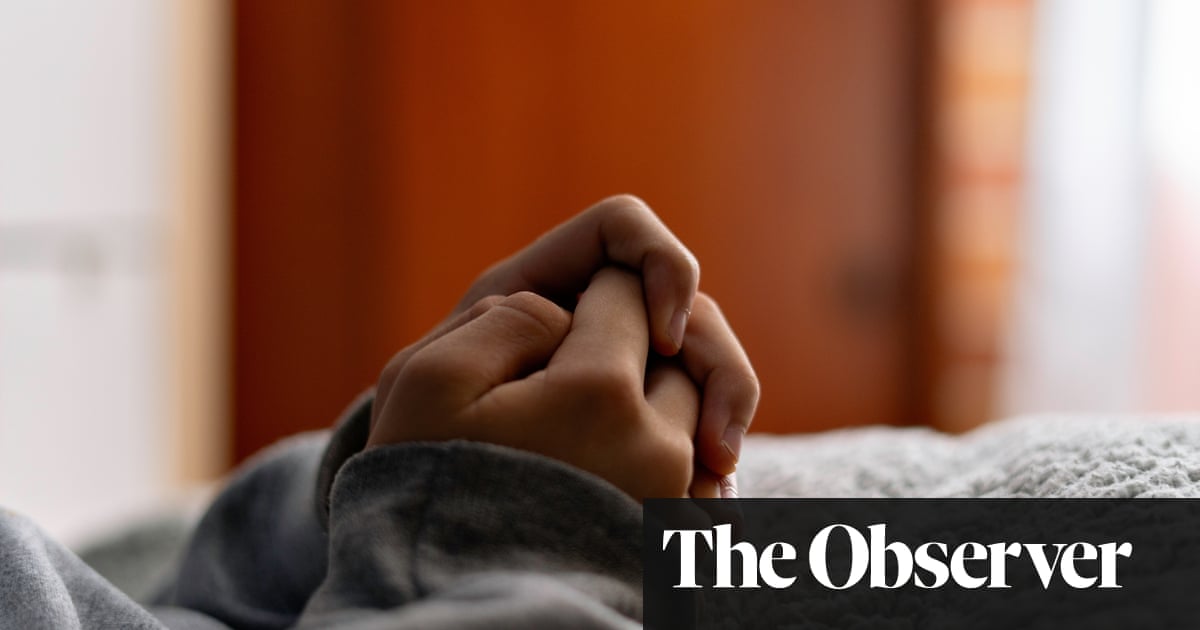
ast week, driving to the shops, I passed a care home and saw a figure standing at an upstairs window: an old woman looking out at a world she could not enter. She looked like a prisoner. And in a way, that’s probably what she was.
Let’s talk about old people. Let’s talk about people in care homes, about people living with dementia and dying with dementia, out of sight and out of mind, and what the lockdown means for them. Let’s talk about what we are not talking about enough, not thinking about enough, not caring about enough.
Of course we should be dismayed and angry at the lack of personal protective equipment in hospitals – but what about in care homes? We should clap for NHS workers and recognise their courageous, crucial work – but what about also celebrating carers, those men and women who are badly paid or not paid at all, who are barely recognised for doing the hard work of looking after the frail, the defenceless, the invisible crowd of humans we may prefer to forget?
It is estimated that approximately a sixth or more of all deaths from Covid-19 have occurred in care homes, although their residents only account for about 1% of the population. In England and Wales, in the week ending 17 April, nearly 25% of recorded deaths from the virus happened there. The peak of infection is said to have passed – but in care homes it is accelerating, and recorded Covid-19 care home deaths are now running at approximately 2,500 a week. One care home provider has said that death rates are now eight times the rate of admission. In Scotland, 40% of its 2,272 deaths from the virus up to 26 April took place in care homes. Many experts believe that the eventual death toll will be higher in these settings than in hospitals. In Spain, it is now thought that more than two-thirds of deaths from coronavirus have been in care homes. Outside one home in New York, trucks were parked to store bodies. It’s carnage.
At first, the old and the vulnerable were airbrushed out of the UK picture: until the end of April, only deaths from the virus that occurred in hospital were counted, which was why on 29 April, the figures suddenly jumped by 4,000. And then, the old and vulnerable became almost like collateral damage: people were dying, dying in their hundreds and thousands – “but” they were old. It’s sad, of course, but not very sad, for the old aren’t us. They’re different, the others, the ones who don’t matter so much because they’re at the end of things, not the fresh beginning.
Since those who are old are at high risk, many care settings have become like fortresses or besieged cities – no one’s allowed in, because they might carry the virus and release it to run amok among the most vulnerable. But if the virus is dangerous and often deadly, so too is isolation for people living with dementia.
At the start of the pandemic, hospitals suspended visitors, but made three exceptions: patients were allowed to have one partner or visitor if they were receiving end-of-life care, were in labour, or were children. A few weeks later, after heartbreak and devastation, a fourth category of visitor was added to the NHS guidance: patients who had mental health conditions such as dementia, where the absence of a loved one would cause distress and damage – because isolation is dangerous for those who are frail and confused; it can be fatal.
Many hospitals are still not following this clear and explicit advice: John’s Campaign – “for the right to stay with people with dementia” – looked at the websites of 52 mental health trusts and found that only 12 were allowing close relatives access to mental health in-patients. And it is clear that many acute hospitals are also failing to open their doors to the people whom their vulnerable patients need the most.
There are approximately 220 NHS hospital trusts; there are more than 15,000 care homes (with about 450,000 residents), and they have been given no clear guidance. Some of them are still allowing family carers in, with the obvious caveat that they follow strict procedures. Many have chosen to control infection by closing their doors – except in some cases, to receive patients discharged from hospital, even when they have had Covid-19, in order to free up hospital beds. On care home websites, there are statements of regret at the distress this may cause both to residents and to their families, and assurances that members of staff are doing their utmost to step into the yawning gap.
I’m sure the staff – the great, unsung army of men and women classed as “unskilled” who do the hardest job for the lowest pay and who now have to witness the daily anguish of those they look after – are doing their best. But there are approximately 120,000 vacancies in care homes, and a paid carer isn’t a family carer, or a partner or spouse or daughter or son or grandchild. A paid carer isn’t an intimate, can’t be the memory, the gatekeeper, the beloved link to the familiar world.
The public has been asked to make sacrifices in these lockdown days. People with dementia have not been asked. Some are enduring an enforced isolation that is a violation of their fundamental human rights, and many of them simply do not understand why they can no longer see those they are close to. They ask for them and are refused. They feel abandoned and scared. Many will deteriorate, many will never recover from this deterioration. It will be terminal. There are other ways of dying than from the virus.
The pandemic isn’t going away any time soon. People talk about months, even years. Time changes the meaning of isolation for someone who is old and vulnerable and who may not have much time left. It turns it into profound suffering. It shocks me that the close relative of someone with dementia is not allowed to see their loved one. Can’t they be trusted to obey rules of hygiene, of social distancing, or to keep away from the home if they feel unwell? In hospital and residential settings, essential carers are just that – essential, as vital as the paid carer or the nurse or the doctor. There are many ways of dying, and many ways of saving a life.
The transformation of a home into a jail, which has led some relatives to turn to the law to try to break out their loved one, has been done for good motives, and in the name of protection. But such enforced loneliness is cruel and is wrong. It causes untold pain and harm. Children calling to their trapped parent through a fence, comforting them despairingly through a closed door. The helpless attempt at communication by phone, by Zoom. Last goodbyes by Skype. Death alone.
The virus has laid bare gross inequalities in the country. People living and dying with dementia – at home or in hospital or a care home – are among the most vulnerable in society, and they are also the easiest to ignore and forget. Let’s not.
• Nicci Gerrard is an Observer journalist and a founder of John’s Campaign












